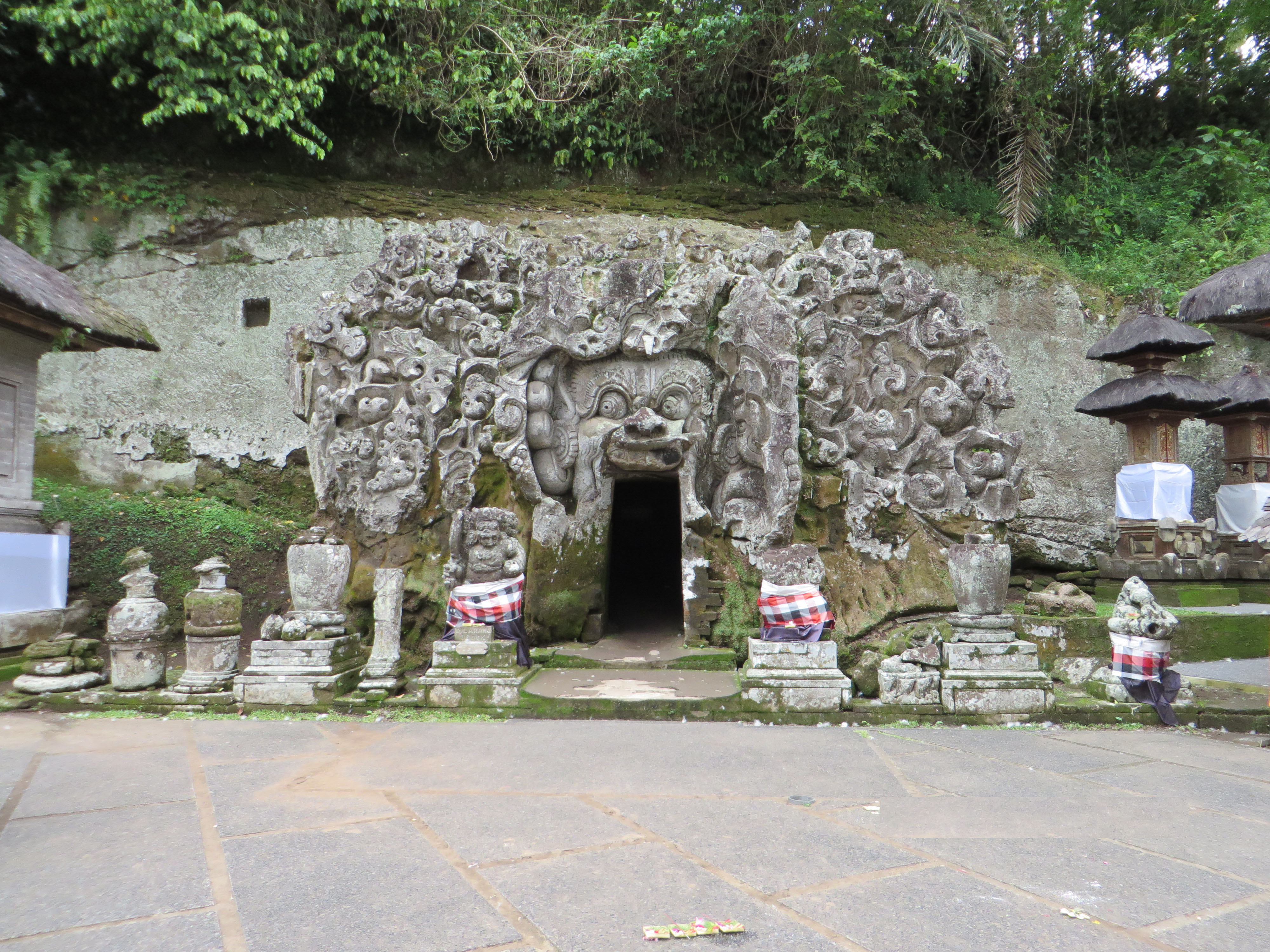Goa Gajah on:
[Wikipedia]
[Google]
[Amazon]



 Goa Gajah, or Elephant Cave, is located on the island of Bali near
Goa Gajah, or Elephant Cave, is located on the island of Bali near
Elephant Cave - UNESCO World Heritage Centre
/ref> but was pulled out along with 11 other sites on 2015.
Elephant Cave - UNESCO World Heritage Centre
Accessed 2009-03-06. * * {{coord, 8, 31, 24.20, S, 115, 17, 10.89, E, display=title Tourist attractions in Bali Archaeological sites in Indonesia Buildings and structures in Bali Cultural Properties of Indonesia in Bali



 Goa Gajah, or Elephant Cave, is located on the island of Bali near
Goa Gajah, or Elephant Cave, is located on the island of Bali near Ubud
Ubud is a town on the Indonesian island of Bali in Ubud District, located amongst rice paddies and steep ravines in the central foothills of the Gianyar regency. Promoted as an arts and culture centre, it has developed a large tourism indust ...
, in Indonesia
Indonesia, officially the Republic of Indonesia, is a country in Southeast Asia and Oceania between the Indian and Pacific oceans. It consists of over 17,000 islands, including Sumatra, Java, Sulawesi, and parts of Borneo and New Guine ...
. Built in the 9th century, it served as a sanctuary.
History
Although the exact origins of the cave are uncertain, it is believed to have been built as place for spiritual meditation. One folklore relates that it was created by the fingernail of the legendary giant Kebo Iwa. However, examining its style, the sanctuary was probably dated from the 11th centuryBali Kingdom
The Kingdomship of Bali was a series of Hindu-Buddhist kingdoms that once ruled some parts of the volcanic island of Bali, in Lesser Sunda Islands, Indonesia. With a history of native Balinese kingship spanning from the early 10th to early 2 ...
. The complex contains both Hindu and Buddhist imagery, as the cave contains lingam and yoni, symbol of Shiva, and the image of Ganesha, while by the river there are carved images of stupas and chattra, imagery of Buddhism.
The cave was rediscovered by Dutch archaeologists in 1923, but the fountains and bathing pool were not discovered until 1954.
Site description
The temple is characterised by menacing faces that are carved into the stone – whose purpose is assumed to be the warding off of evil spirits. The primary figure was once thought to be an elephant, hence the nickname ''Elephant Cave''. Other sources state that it is named after the stone statue of the Hindu God Ganesh (characterised by having the head of an elephant) located inside of the temple. The site is mentioned in the Javanese poem Desawarnana written in 1365. An extensive bathing place on the site was not excavated until the 1950s. The entrance of the cave is accessed only by walking down a long flight of stairs. The inside of the temple is small and usually has trails of white smoke from the incense burning. Visitors wearing shorts will be issued a sarong to tie around the waist before entering the courtyard. The complex also contains 7 statues of women (out of which 1 has been destroyed due to an earthquake) holding water pitchers that depicts seven holy rivers of India: theGanga River
The Ganges ( ) (in India: Ganga ( ); in Bangladesh: Padma ( )). "The Ganges Basin, known in India as the Ganga and in Bangladesh as the Padma, is an international river to which India, Bangladesh, Nepal and China are the riparian states." is ...
, Sarasvati River
The Sarasvati River () is a deified river first mentioned in the Rigveda and later in Vedic and post-Vedic texts. It played an important role in the Vedic religion, appearing in all but the fourth book of the Rigveda.
As a physical river, i ...
, Yamuna River
The Yamuna ( Hindustani: ), also spelt Jumna, is the second-largest tributary river of the Ganges by discharge and the longest tributary in India. Originating from the Yamunotri Glacier at a height of about on the southwestern slopes of Ba ...
, Godavari River, Sindhu River
The Indus ( ) is a transboundary river of Asia and a trans-Himalayan river of South and Central Asia. The river rises in mountain springs northeast of Mount Kailash in Western Tibet, flows northwest through the disputed region of Kashmir, ...
, Kaveri River, and Narmada River.
World Heritage Status
This site was added to theUNESCO
The United Nations Educational, Scientific and Cultural Organization is a specialized agency of the United Nations (UN) aimed at promoting world peace and security through international cooperation in education, arts, sciences and culture. It ...
World Heritage
A World Heritage Site is a landmark or area with legal protection by an international convention administered by the United Nations Educational, Scientific and Cultural Organization (UNESCO). World Heritage Sites are designated by UNESCO for ...
Tentative List on October 19, 1995, in the Cultural category,/ref> but was pulled out along with 11 other sites on 2015.
Notes
External links
*References
Elephant Cave - UNESCO World Heritage Centre
Accessed 2009-03-06. * * {{coord, 8, 31, 24.20, S, 115, 17, 10.89, E, display=title Tourist attractions in Bali Archaeological sites in Indonesia Buildings and structures in Bali Cultural Properties of Indonesia in Bali